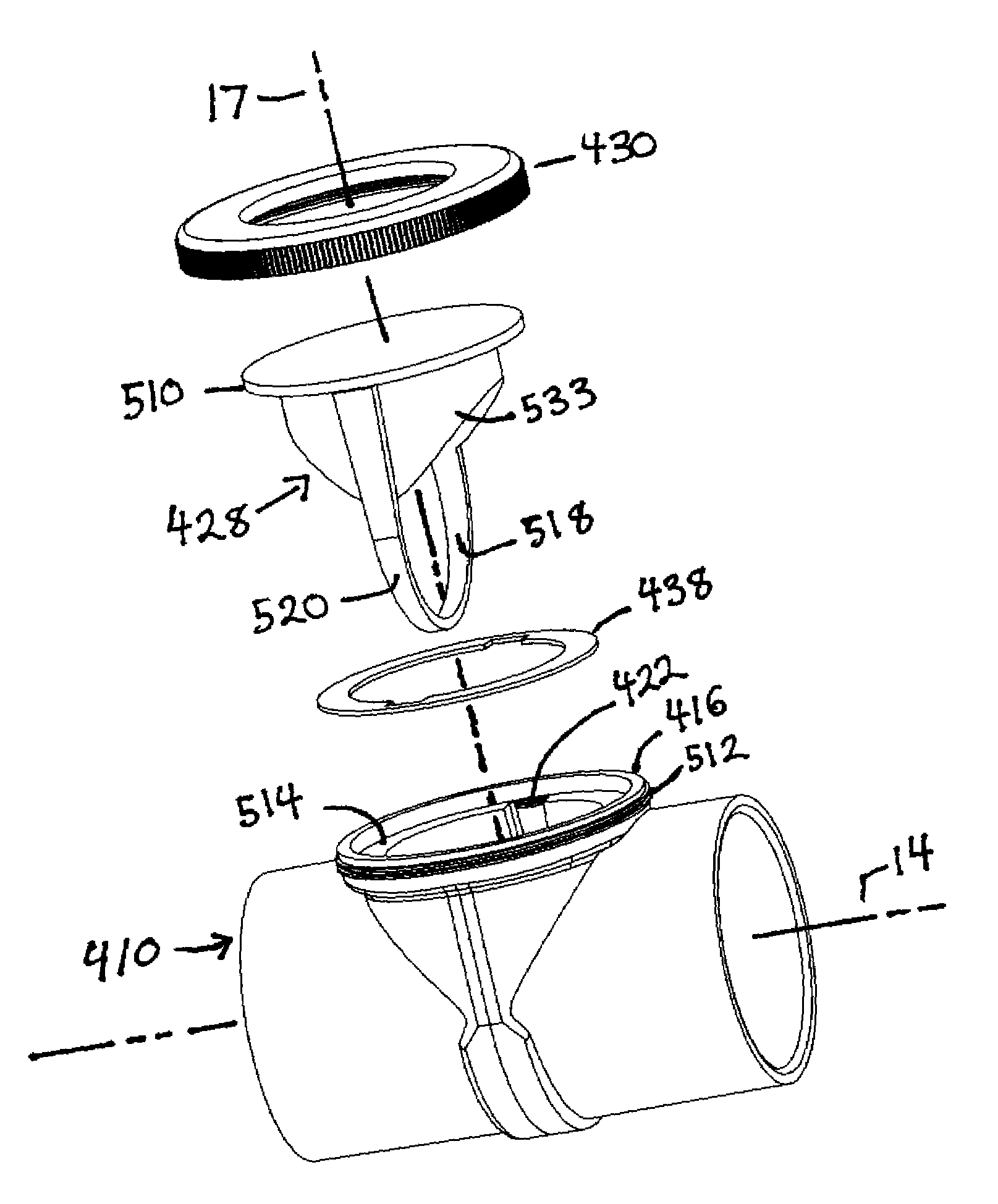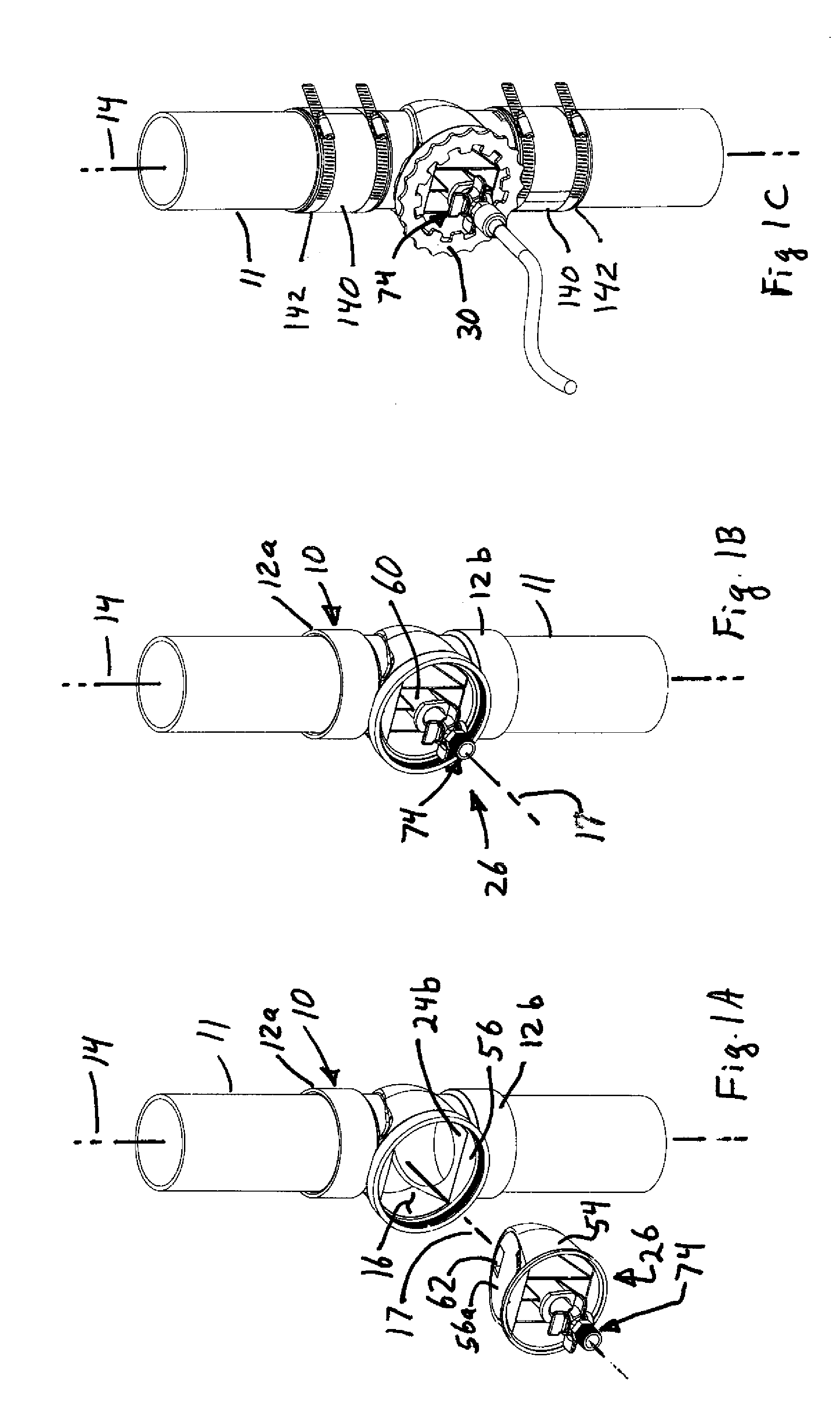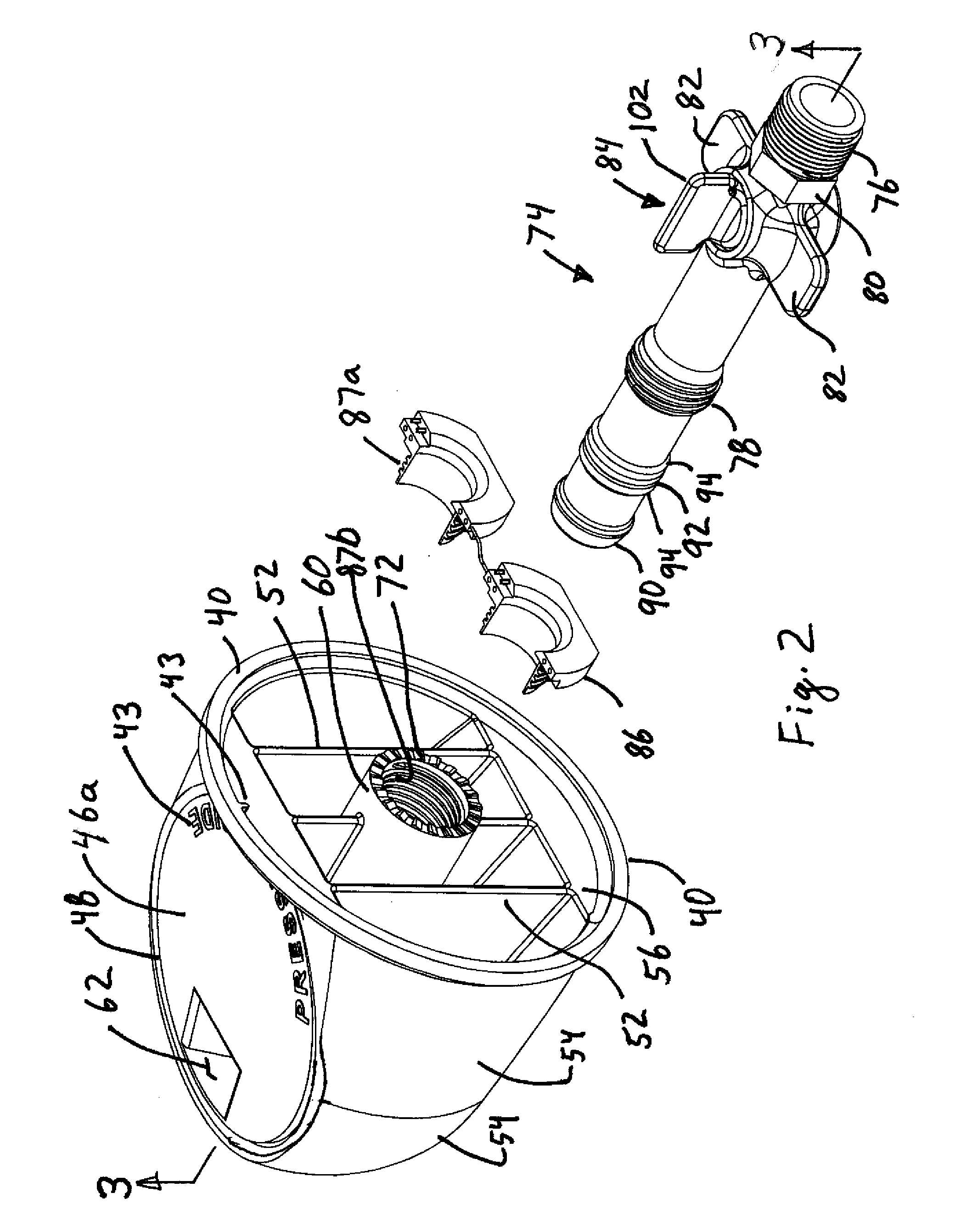Pipe pressure testing method and apparatus
a technology of pressure testing and pipe pressure, applied in the direction of fluid tightness measurement, screw threaded joints, instruments, etc., can solve the problems of inability to easily allow other uses, inability to clean out or inspect, and risk of fitting breaking or cracking the inflatable bladder, etc., to achieve easy field repair and high initial force
- Summary
- Abstract
- Description
- Claims
- Application Information
AI Technical Summary
Benefits of technology
Problems solved by technology
Method used
Image
Examples
Embodiment Construction
[0089]Referring to FIGS. 1-9, and especially FIGS. 1-4, the plumbing fitting 10 has at least one end, and preferably two opposing ends 12a, 12b, adapted to connect to an end of a pipe line or other conduit for pressure testing the line. The fitting 10 is advantageously made of a polymer, such as ABS or PVC plastic, although other materials could be used, including metal and cast iron. Typically the ends of the pipe line are inserted into mating ends of the fitting as shown in FIGS. 1A and 1B, although the fitting could abut the end(s) of the pipeline with flexible tubular seals clamped over abutting ends of the fitting 10 and pipeline 11 with hose clamps in order to hold the parts in alignment and to ensure the fluid seal as shown in FIG. 1C.
[0090]The fitting 10 has a longitudinal axis 14 along which fluid flows. The fitting has as opening or port 16 into which an apparatus is inserted to regulate flow through the fitting. The fitting has exterior walls 18 and interior walls 20. A f...
PUM
 Login to View More
Login to View More Abstract
Description
Claims
Application Information
 Login to View More
Login to View More - R&D
- Intellectual Property
- Life Sciences
- Materials
- Tech Scout
- Unparalleled Data Quality
- Higher Quality Content
- 60% Fewer Hallucinations
Browse by: Latest US Patents, China's latest patents, Technical Efficacy Thesaurus, Application Domain, Technology Topic, Popular Technical Reports.
© 2025 PatSnap. All rights reserved.Legal|Privacy policy|Modern Slavery Act Transparency Statement|Sitemap|About US| Contact US: help@patsnap.com



